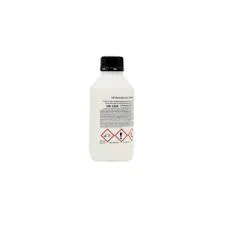Utilizing Poly Aluminium Chloride for Effective Wastewater Treatment Solutions
The Role of Poly Aluminium Chloride in Wastewater Treatment
Wastewater treatment is a crucial process in maintaining environmental health and safeguarding public safety. Among the various chemicals used to enhance the treatment efficiency, Poly Aluminium Chloride (PAC) has emerged as a widely accepted coagulant. This article aims to explore the significance of PAC in wastewater treatment, its mechanisms, advantages, and considerations for its application.
What is Poly Aluminium Chloride?
Poly Aluminium Chloride is an inorganic polymer majorly composed of aluminium, oxygen, and chlorine. It is a coagulant that is synthesized through the polymerization of aluminium chloride and aluminium hydroxide. PAC is characterized by its high charge density and large molecular weight, which make it effective in removing suspended solids, organic matter, and colloidal particles from wastewater. Due to its efficiency and versatility, PAC is often preferred over traditional coagulants such as alum.
Mechanism of Action
The effectiveness of PAC in wastewater treatment can be attributed to various mechanisms. Primarily, PAC operates through the processes of adsorption and charge neutralization. When PAC is added to wastewater, the positively charged aluminium ions neutralize the negatively charged particles. This neutralization causes the destabilization of the colloids in the water, leading to aggregation. The resulting flocs are significantly larger in size, allowing for easier removal through subsequent treatment processes such as sedimentation and filtration.
Additionally, PAC can facilitate the removal of phosphorous and certain heavy metals. The coagulation process also enhances the treatment of organic matter, which is vital for meeting regulatory discharge standards. The incorporation of PAC can improve the overall clarification of the effluent, resulting in cleaner water that is less harmful to the environment.
Advantages of Using PAC
1. Improved Solids Removal PAC has shown a superior ability to remove suspended solids compared to conventional coagulants. This results in a clearer effluent, which is particularly important for industries that require high-quality discharge.
poly aluminium chloride in wastewater treatment

2. Wider pH Range PAC can be effective across a broader range of pH levels, making it versatile for various wastewater types. This adaptability allows facilities to use it in diverse conditions without the need for extensive pre-treatment adjustments.
3. Lower Chemical Demand Due to its higher charge density, PAC typically requires lower dosages than alum for similar treatment results. This translates to cost savings in chemical procurement and transportation.
4. Reduced Sludge Production The use of PAC often results in lower sludge volumes in comparison to traditional coagulants. This reduced sludge generation not only decreases landfill disposal costs but also minimizes the environmental impact associated with sludge management.
5. Faster Settling The flocs formed by PAC have a larger size and density, which facilitates quicker settling in sedimentation tanks. This faster settling process can enhance treatment efficiency and reduce retention times in treatment systems.
Considerations and Challenges
While the benefits of PAC are significant, there are some considerations for its use. The formulation and dosage of PAC need to be carefully managed, as excessive use may lead to residual aluminium in the treated water, which could pose health risks. Moreover, the interactions of PAC with different waste components can vary, requiring ongoing monitoring and optimization.
It is also vital to consider environmental impacts. Although PAC is generally less harmful than some other coagulants, facilities must ensure proper disposal of generated sludge and manage any residual chemicals to comply with environmental regulations.
Conclusion
Poly Aluminium Chloride plays a pivotal role in modern wastewater treatment processes. Its high efficiency in coagulating and flocculating pollutants makes it an invaluable tool in achieving clean and safe effluents. As wastewater treatment continues to evolve, the adaptability, cost-effectiveness, and performance advantages of PAC will likely ensure its relevance in sustainable water management practices. The careful application and monitoring of PAC can help industries meet stricter regulatory requirements while contributing to a healthier environment.
-
lk-319-special-scale-and-corrosion-inhibitor-for-steel-plants-advanced-solutions-for-industrial-water-systemsNewsAug.22,2025
-
flocculant-water-treatment-essential-chemical-solutions-for-purification-processesNewsAug.22,2025
-
isothiazolinones-versatile-microbial-control-agents-for-industrial-and-consumer-applicationsNewsAug.22,2025
-
scale-inhibitor-key-solutions-for-water-system-scale-preventionNewsAug.22,2025
-
organophosphonates-versatile-scale-inhibitors-for-industrial-water-systemsNewsAug.22,2025
-
scale-and-corrosion-inhibitor-essential-chemical-solutions-for-water-system-maintenanceNewsAug.22,2025





